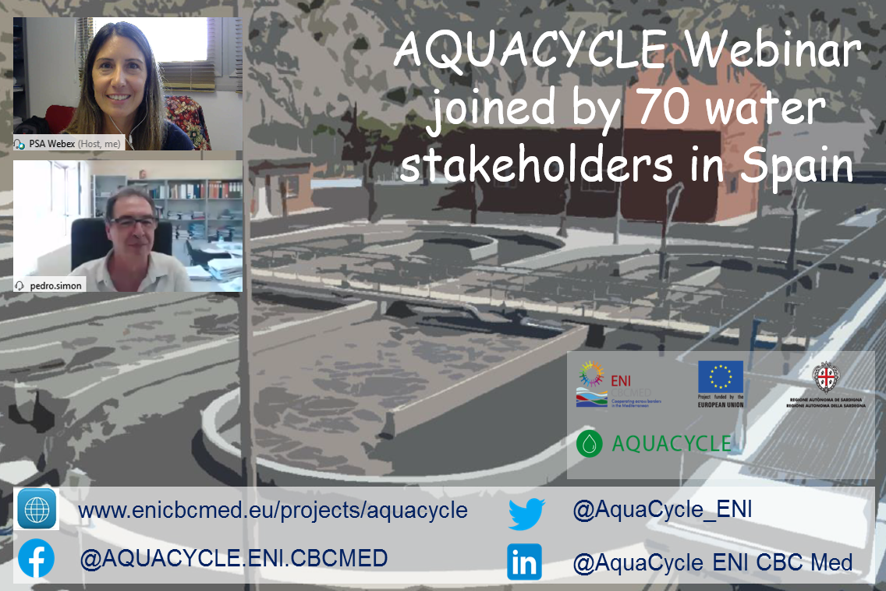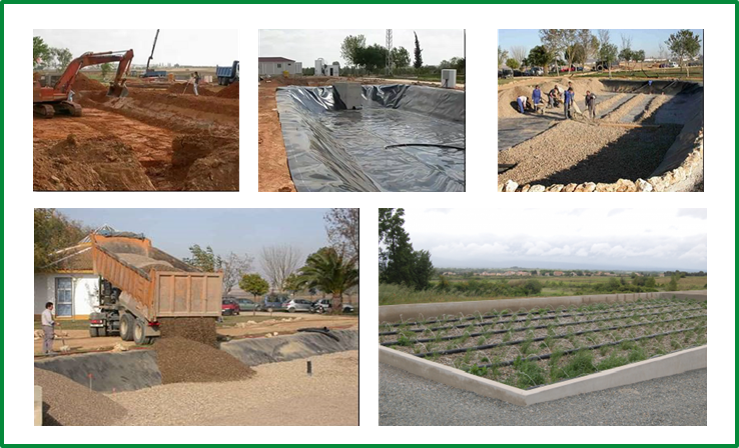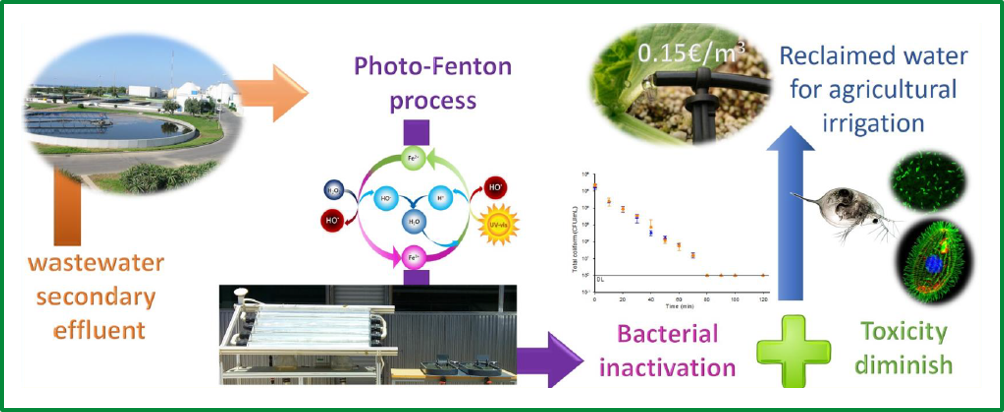AQUACYCLE Webinar joined by 70 water stakeholders in Spain

Due to the prevailing lockdown measures, the First Stakeholder Workshop in Spain was organized in the form of a Webinar on 8 October 2020. Within just a couple of days following the announcement, online registrations to join the webinar exceeded 100!
Wastewater treatment plant directors, operators and technicians, were joined by both senior and junior scientific researchers, as well as decision-makers and agricultural producers. This added up to 70 participants joining the webinar! No doubt such a number would have presented several logistical and technical headaches to anyone organizing such an event. The AQUACYCLE research teams in Spain proved they would meet the challenge in a seemingly effortless manner!
The theme of the First Stakeholder Workshop in Spain again focused on Changing the paradigm for wastewater reuse. Indeed, with view to obtain comparable feedback from the participants, the agenda of the webinar (in Spanish) followed the same template as the one adopted earlier for the stakeholder workshops organized in Lebanon and in Tunisia.
The Webinar was hosted by the Plataforma Solar de Almería (PSA-CIEMAT). Dr. Isabel Oller (pictured left, below) moderated the event throughout. Starting off with an introduction to the ENI CBC Med Programme, Isabel also presented the scope and objectives of the AQUACYCLE project. The importance of wastewater reuse in water scarce regions was elaborated upon by Pedro Simón Andreu. Pedro is the Technical Director of the Regional Entity for Wastewater Sanitation and Treatment in Murcia (ESAMUR) and co-organizer of the webinar.

A great welcome was extended to Dr. Isabel Martín, Senior Researcher with the Spanish based Foundation CENTA, who introduced AQUACYCLE’s sister project MENAWARA.
Next on the agenda were keynote presentations directly related to AQUACYCLE’s eco-innovative wastewater treatment technology (APOC). The 3 components of the APOC wastewater treatment system (Anaerobic digester, constructed wetland and solar raceway pond) were each introduced by well-known experts in these respective fields of expertise.
- APOC System Component 1: Anaerobic Digester
-
Dr. Teresa de la Torre García, Responsible for wastewater treatment and reuse projects within the department I+D+i of ACCIONA, shared the outcome of the EU funded Life project RAMSES. Completed in 2018, she explained how the project had been instrumental to make significant improvements in the anaerobic digester component at the Blanca Wastewater Treatment Facility.
Among other, the advances include: a sludge reduction by 50%, a reduction of energy consumption by over 30% as well as a significant improvement of the water quality at the outlet of the anaerobic digester. The project also demonstrated that the optimum anaerobic digestion process resulting from laboratory experiments remained stable in the face of both flow and temperature fluctuations.

Left: Experimental determination of optimal configuration for anaerobic digestion in the laboratory
Right: Regional deputies and municipal councillors visit the Blanca wastewater treatment facility
Credit: EU funded Life project RAMSESThe Wastewater Treatment Facility in the town of Blanca which is located in the Murcia Region of Spain, is one of the planned locations for the demonstration of the APOC system. This will require the design and construction of a constructed wetland to be added to the existing facility.
- APOC System Component 2: Constructed Wetland
-
Dr. Juan José Salas, Director of Technological Services of the Foundation CENTA walked the participants through the design and construction phases of constructed wetlands. The real-life examples in his presentation were based on the so-called vertical flow type of constructed wetlands.

Building up a constructed wetland.
Credit: Dr. Juan José Salas, CENTA Foundation
- APOC System Component 3: Solar Raceway Pond
-
Prof. Jose Antonio Sánchez Pérez, Director of the Solar Energy Research Centre (CIESOL), presented the third component that is foreseen in the APOC wastewater treatment system, i.e. Solar Raceway Ponds. His presentation outlined the most recent research outcomes of the ongoing EU funded Life project ULISES (Upgrading wastewater treatment plants by low cost innovative technologies to reach energy self-sufficiency and full recycling).
As depicted in the diagram he presented below, the solar raceway pond enables both the inactivation of bacteria and a reduction in the toxicity of the final effluent. At a cost of 0.15 Euro per cubic metre, this tertiary treatment guarantees a safe reuse of the reclaimed water for irrigation purposes in the agricultural sector. This low cost results from the use of naturally available, i.e. solar energy to drive the disinfection process through the so called Photo-Fenton process. Note that in the APOC system, the aeration tank (shown at the top left in the diagram) is replaced by the Constructed wetland as described in the previous presentation.










